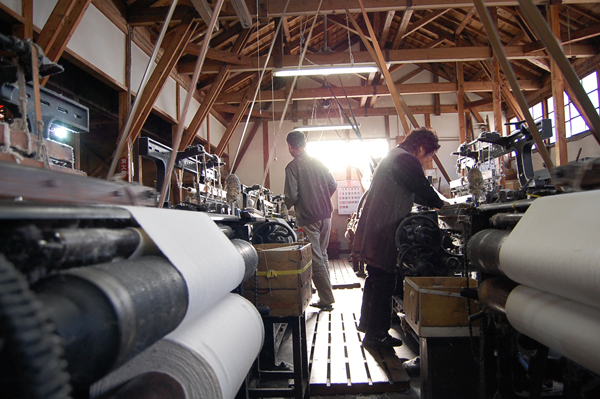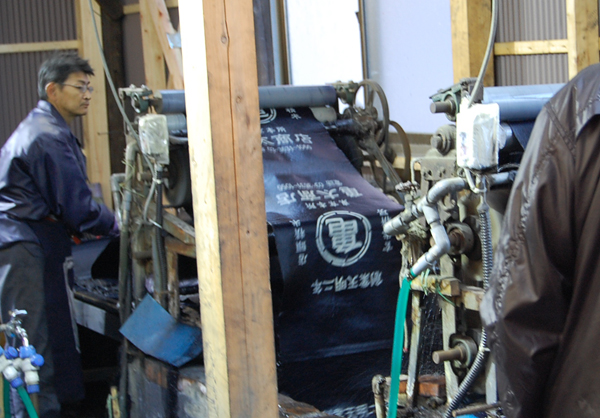What is MAEKAKE? 日本の「前掛け」とは?
What is a Japanese Maekake?
Maekake are a traditional style of Japanese apron, tied at the hips and worn by craftsmen and the staff of certain shops.
Maekake have been favored by workmen since the 15th century Muromachi period. The name maekake comes from mae, meaning front, and the verb kakeru, to hang.
■豊橋~前掛け職人■ 織り(芳賀氏)

■豊橋~前掛け職人■ 型、染め(杉江氏)


■豊橋~前掛け職人■ 型、染め(鈴木氏)

Occasionally, the variant maetare is used, with tare derived from the verb tarasu, to drape or suspend.
An essential part of the Japanese workman’s uniform, maekake are worn especially among merchants and craftsmen running family businesses, and by workers in independent shops like rice, lumber and liquor stores.
The simple design, a thickly woven square of cotton cloth with long straps, displays both the taste and practical wisdom of the garment’s original creators.
The maekake is worn by tying the sturdy cloth around the hips and allowing the front square to drape to the ankles. The classic indigo color reflects the Japanese sense of this color as tranquil and assuring. The company or shop’s trademark and name are printed prominently on the front, often along with the telephone number or year the company was founded. The apron thus functions both as an advertisement and a symbol of the wearer’s pride in his or her work.
Over the past several decades, the market has seen a flood of non-Japanese aprons made in China and elsewhere, but even today traditional Japanese maekake are highly valued as part of the working uniform of shopkeepers and craftsmen throughout the country.
(取材:前掛け専門店エニシング 西村和弘)
�c�C�[�g